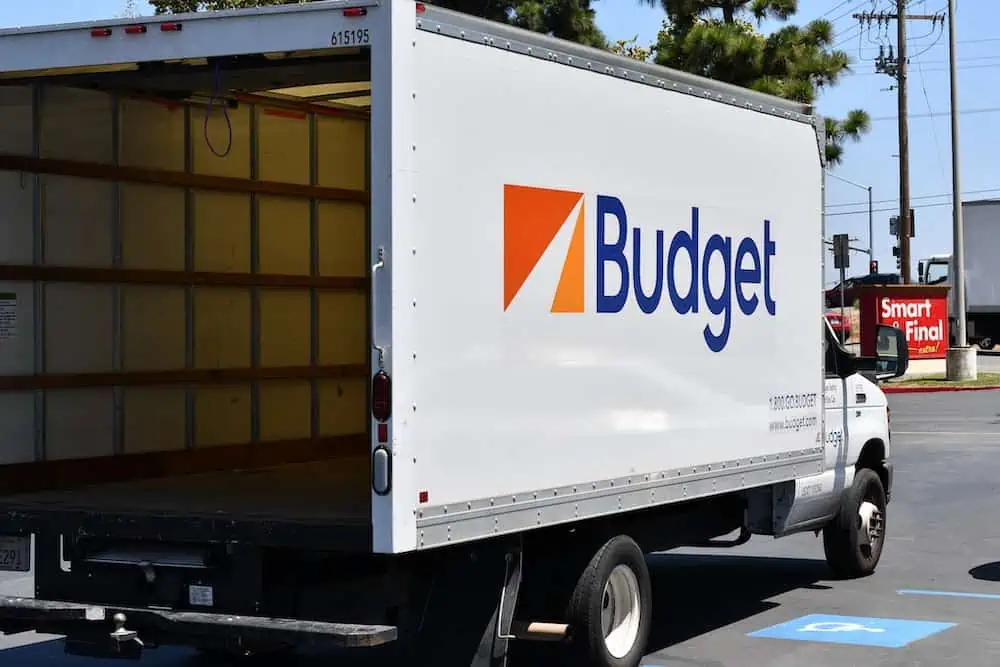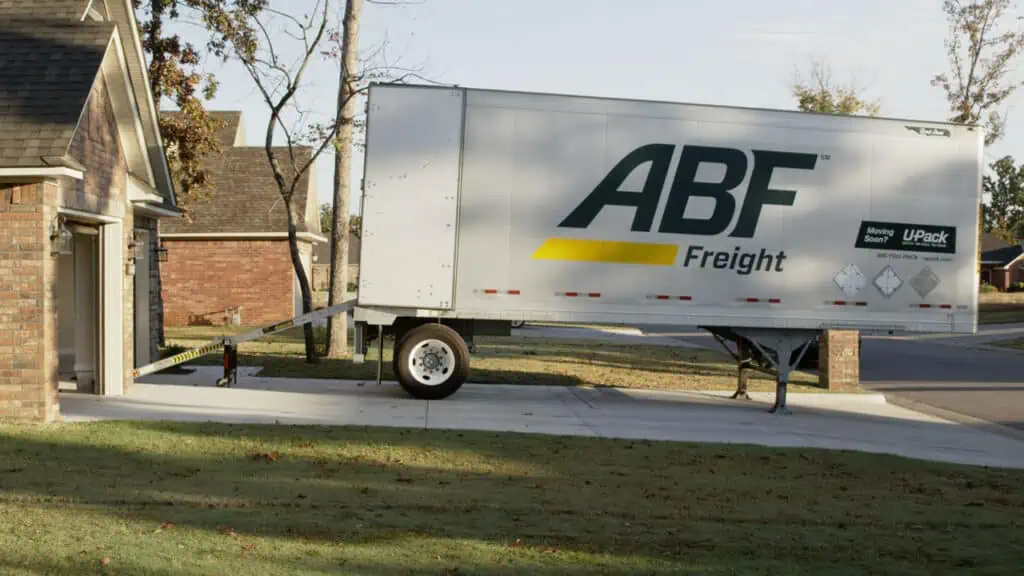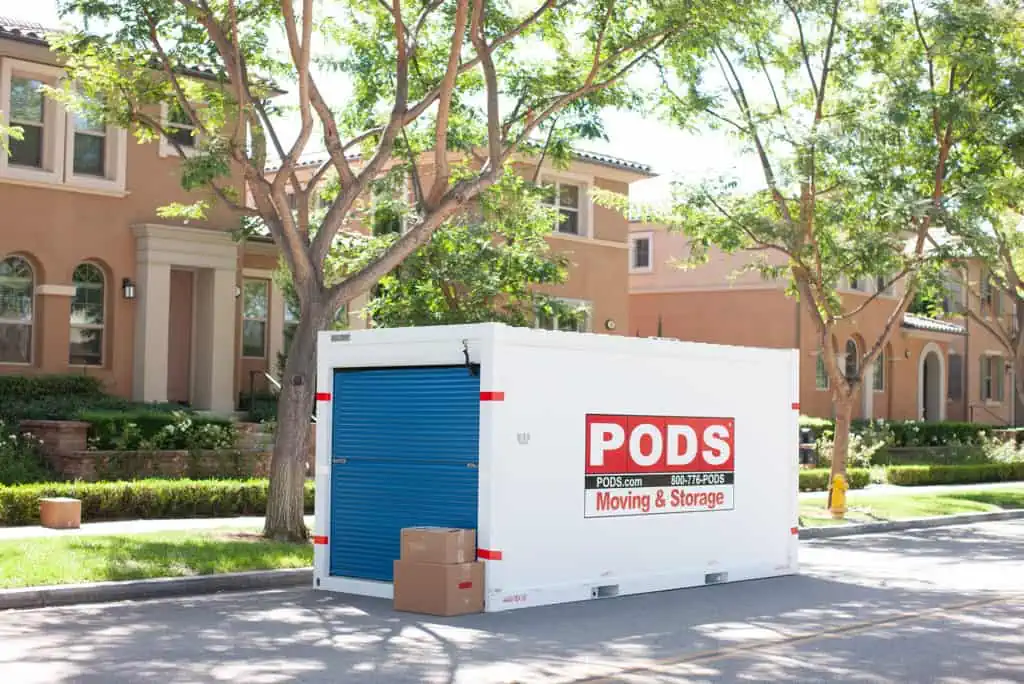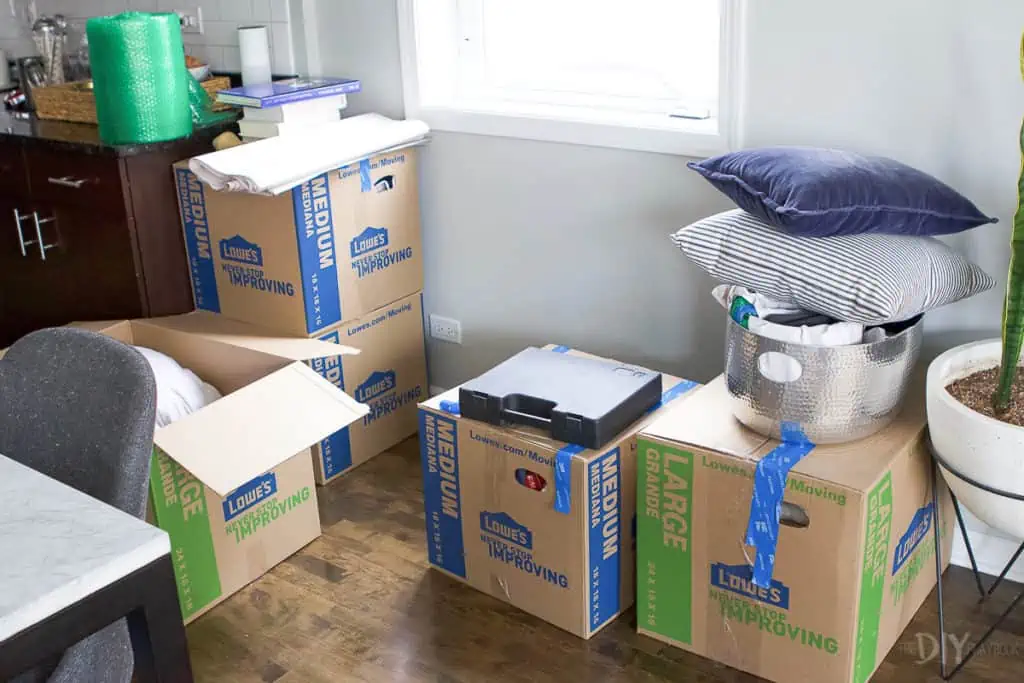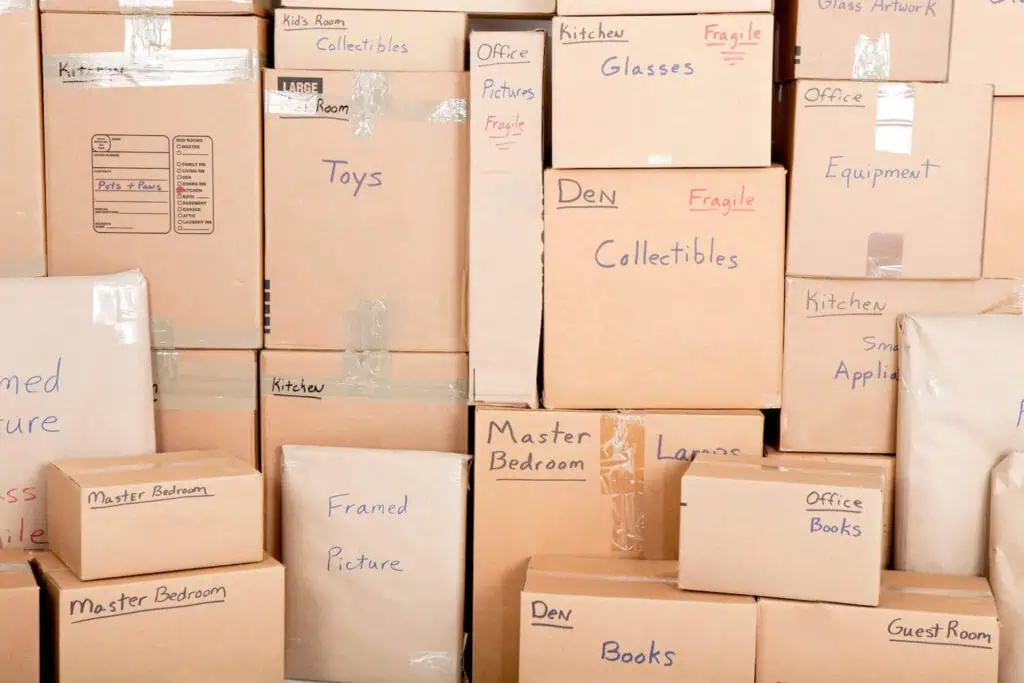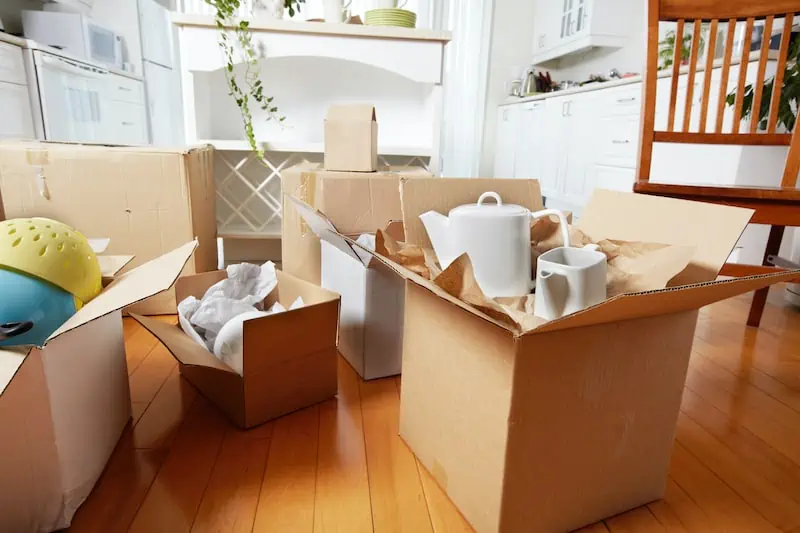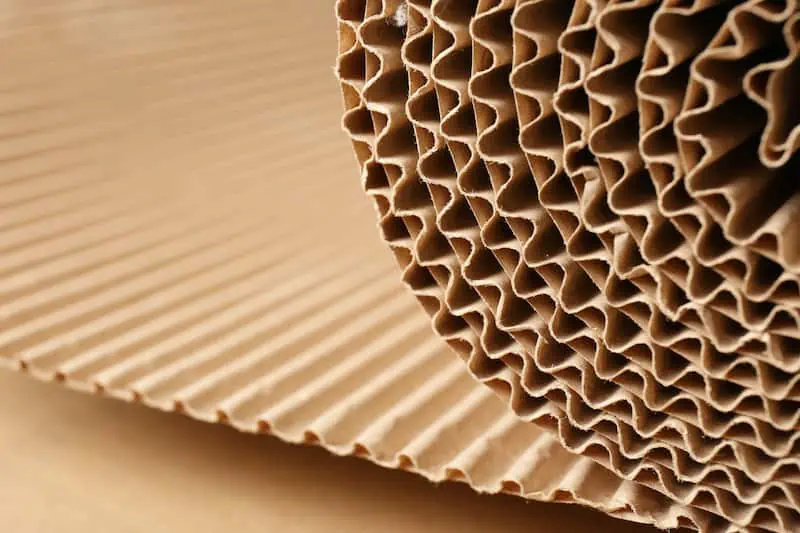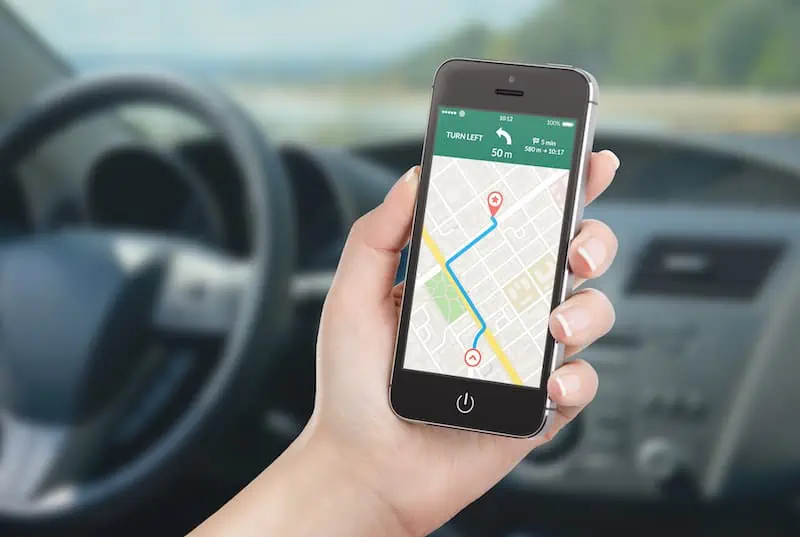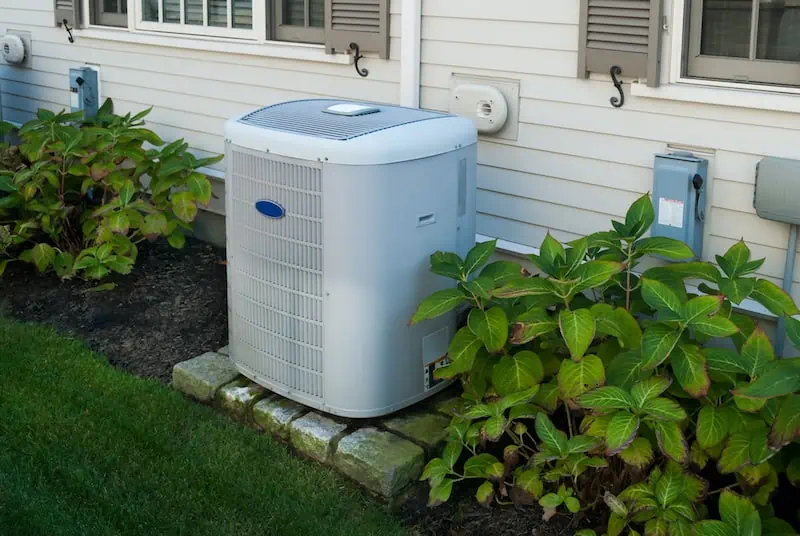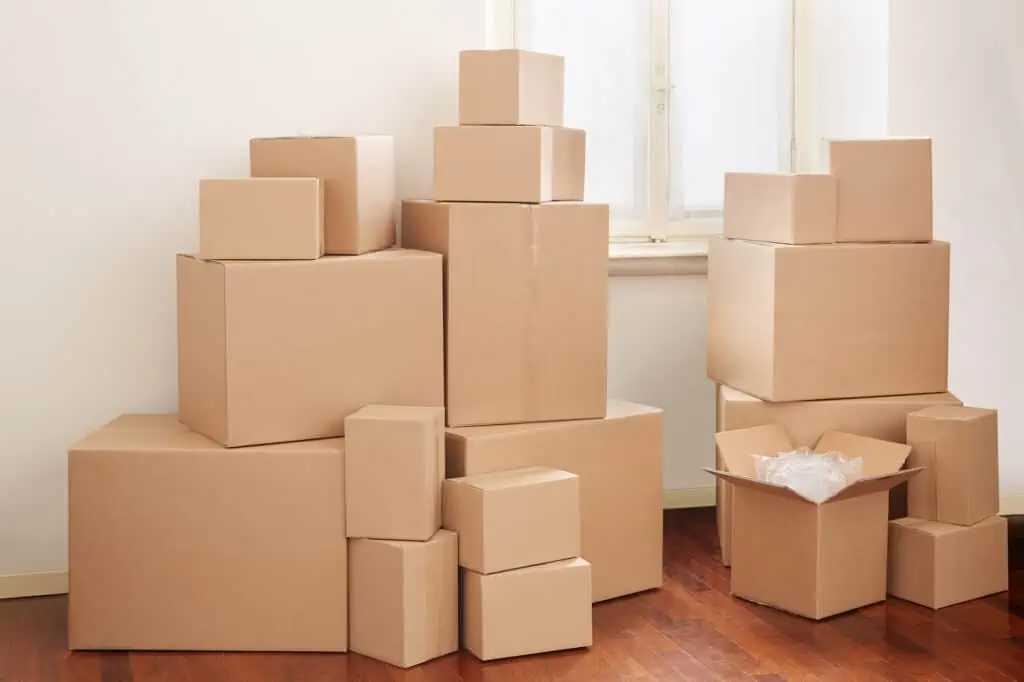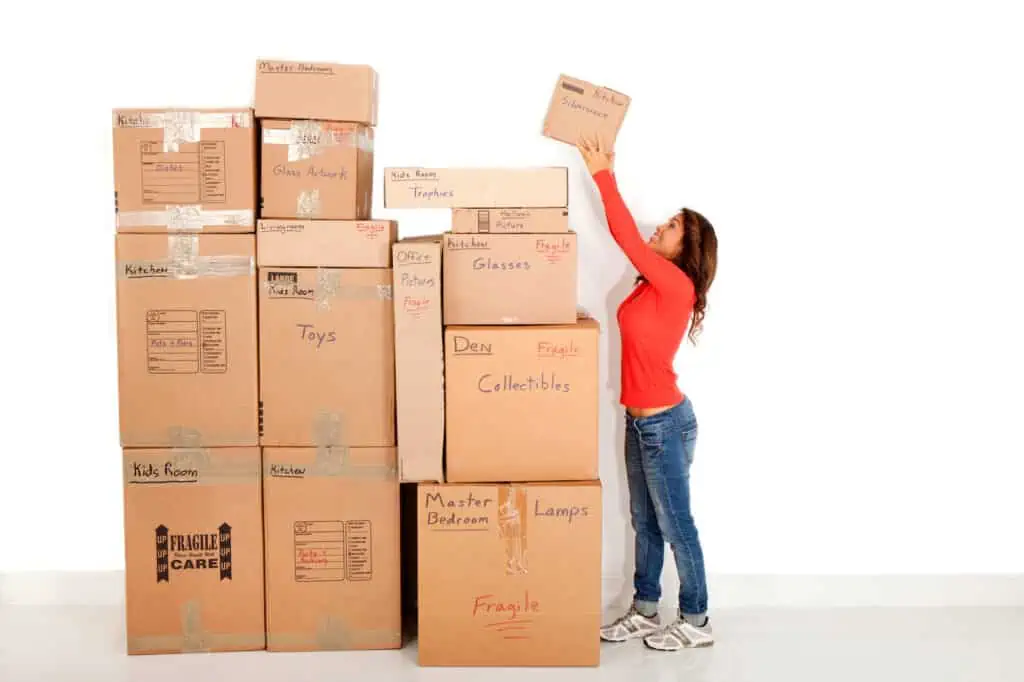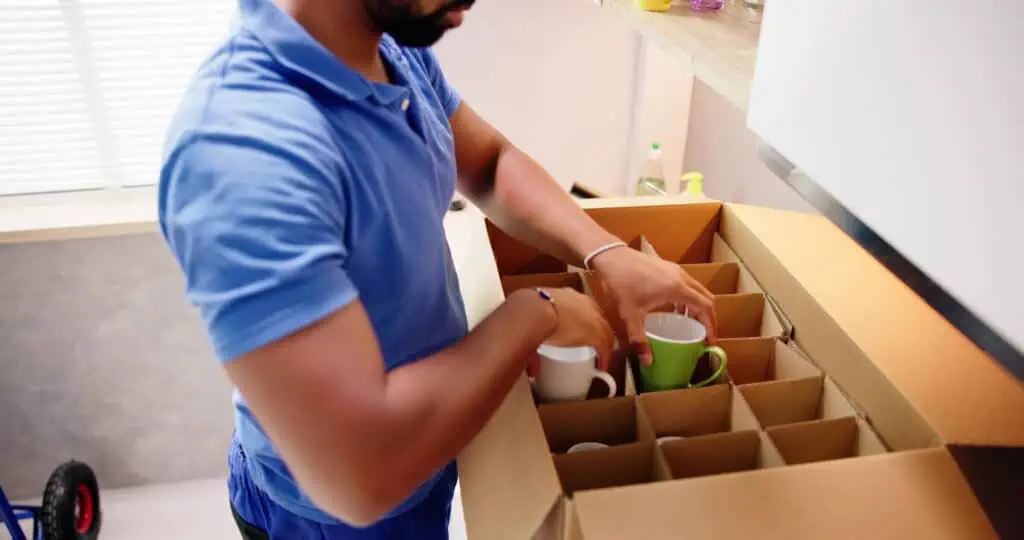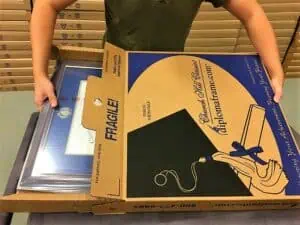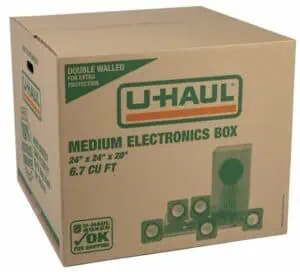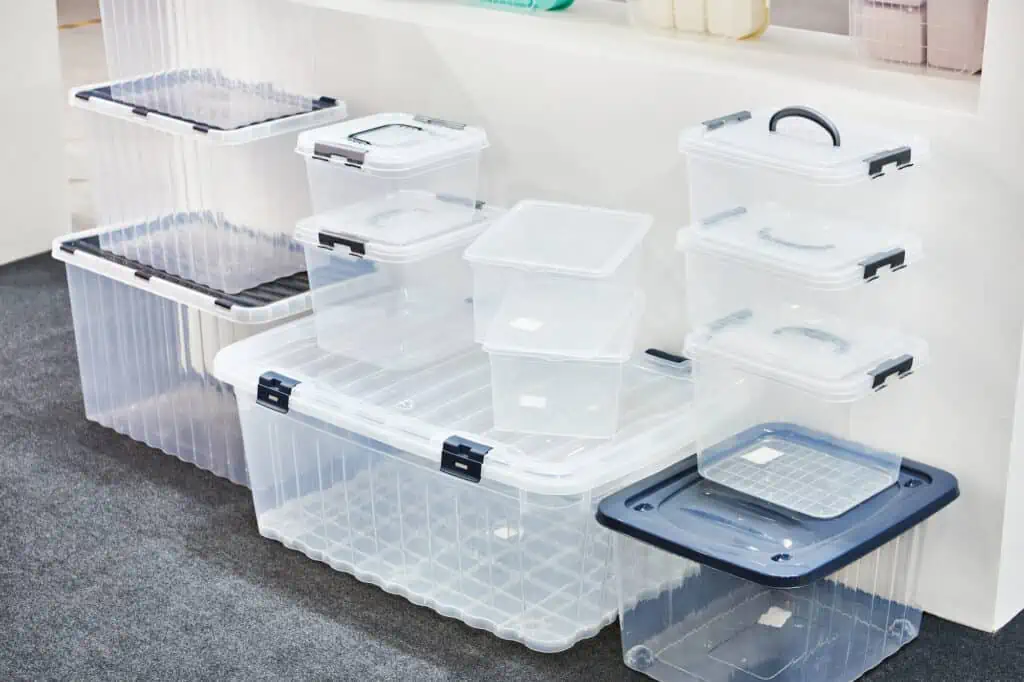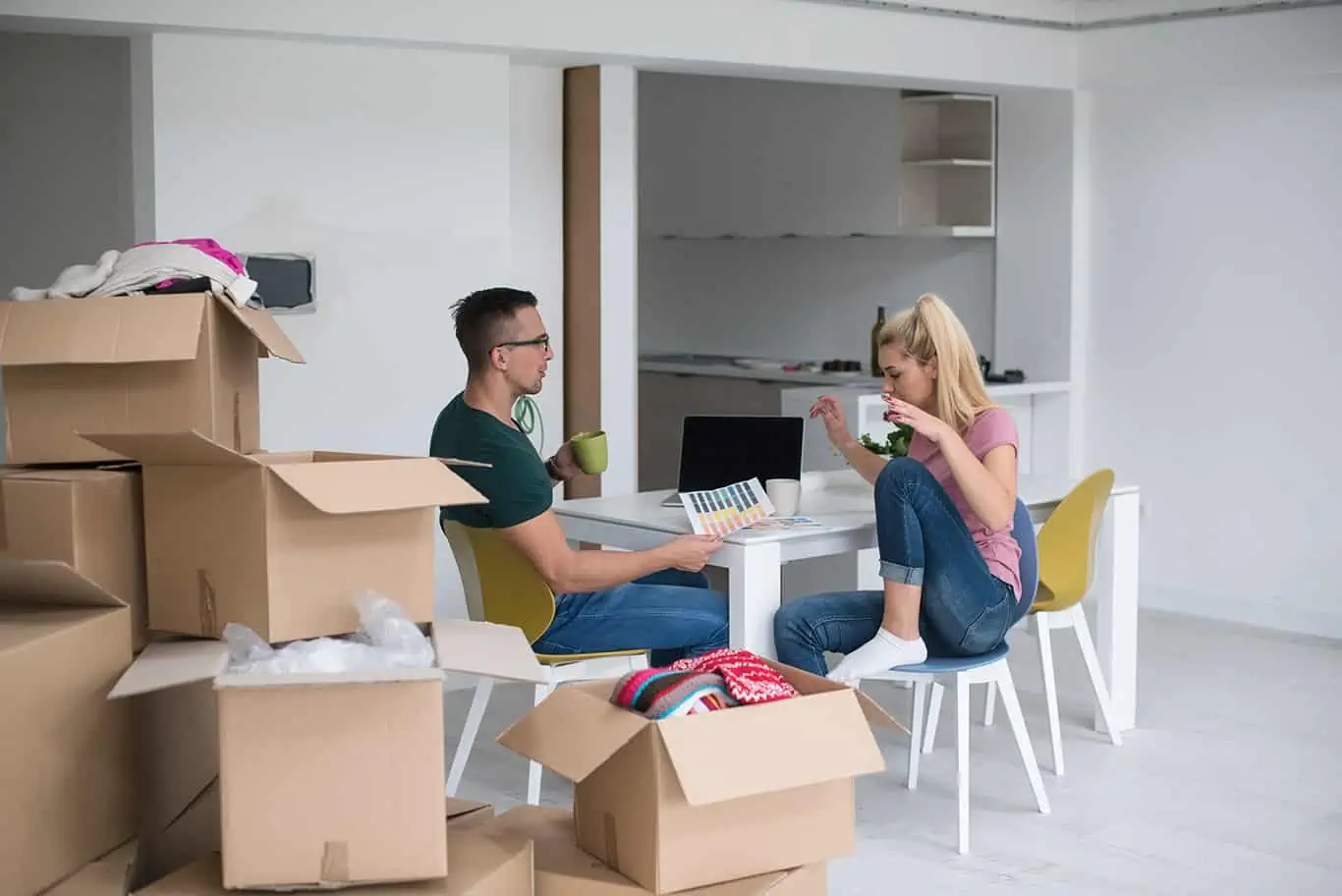What’s the difference between preparing for a local move and planning a long-distance move? If you guessed “time,” that’s only part of the equation. When it comes to moving long distances, it takes a lot more planning, preparation, and money.
There are many, many more steps to take than a local move, and it can get a little overwhelming. That’s what this guide is for! Learn everything about how to move long-distance, including tips on moving across the country and packing up your things.
How Much Do Long-Distance Moves Cost?
Interstate and long-distance moving companies charge based on weight, distance, and any extra equipment or insurance options you opt into.
The average cost of an interstate move is $4,300 for an average distance of 1,225 miles and a shipment weight of 7,400 pounds, according to the American Moving and Storage Association and as reported by numerous outlets.
Ultimately, the price will depend on:
- Your exact starting and ending points
- How much stuff you need to move
- Modes of transportation
- Who, if anyone, you decide to hire
One more big factor to consider is if you have any specialty items to move, such as a baby grand piano or gun safe.
What counts as a long-distance move? Generally, a long-distance move is one that is 400 miles or more. However, the exact number used to determine “local or long-distance” may vary from one moving company to the next.
Cost-Cutting Long-Distance Moving Tips
Here are some money-saving pro tips to keep in mind as you collect estimates and plan your long-distance move:
1. Start a Moving Fund
If you have time before your move, try to start a moving fund to prepare yourself for the upcoming expense of moving long-distance. This may not necessarily save you money, but it’ll help ensure you have the nest egg you need when the time comes.
2. Understand Binding vs. Non-Binding Estimates
It’s important to understand the difference between a binding and non-binding estimate when working with a full-service moving company.
- A binding estimate means you’ll pay the final price of the estimate regardless of whether your stuff ends up weighing less or more than expected.
- A non-binding estimate means you could end up with a different final tally, either less or more, depending on the weight.
3. Take Advantage of Off-Season Moving Rates
Summer is the most popular time to move and, as a result, moving rates are typically the highest during that season. You can bring the price down by being flexible with your moving dates and scheduling your move during weekdays, especially in the winter (or at least not during the summer).
See prices for local moving labor. Read real customer reviews. Easily book your help online.
4. Ask for Discounts and Promotions
Ask moving companies about any discounts or current promotions that you could take advantage of. For example, members of the military and veterans often get cheaper rates for rental trucks and containers.
5. Get Multiple Quotes
Always get moving quotes from at least three different companies, whether you’re moving with a rental truck, portable moving containers, or a full-service moving company. Just remember that cheaper isn’t always better. It’s a good idea to take a look at online reviews and customer satisfaction scores as well.
6. Inquire About Corporate Relocations
Those who are moving for work should see if their employer offers reimbursements for any or all of the move.
7. Make a Budget and Stick to It
Once you have a clear idea of what it’s going to cost to move long-distance, put together a budget. Be sure to keep track of spending along the way, saving receipts and noting expenses, to keep moving costs from getting out of control.
What Kind of Transportation Do I Need?
You have a number of options when planning a long-distance move, and all of them will depend on these three things:
- How much stuff you’re hauling
- Your budget
- Personal preference
Unless you’re selling everything you own and driving into the sunset, you’re going to need something safe and reliable to get all your stuff to your new place.
But don’t worry, you’ve got choices. Here are your best transportation options for a long-distance move.
Driving Yourself
Driving yourself and your stuff in your car is by far the cheapest option. People sometimes decide to take this approach when their long-distance move involves bringing a car or two. If you’re thinking about going this route, there are a few things you should consider first:
- The age and mileage of the car
- Whether the car can handle a long trip without breaking down
- How many people and things need to fit in the car
If you need to get repairs ahead of time, then trust us, do that first. If you don’t have money to sink into repairs, or you just don’t want to add hundreds of miles to your car, consider getting your car shipped.
“Bubble wrap is an attractive option for particularly expensive or hard-to-replace breakables, but it’s bulky and becomes expensive quickly (not to mention, it’s not great for the environment). Packing paper is more than adequate for packing most things.”
If you decide this is the end of the road for your car, consider selling it or trading it in before your move (or you could donate it).
Are you driving with small children? Transporting pets? Using an RV? All of these situations involve special considerations. You can check out those articles for more details on what you should know first.
- Pros: Most affordable long-distance moving option
- Cons: Way more time investment, adds mileage to your car(s), limited space for your stuff, very difficult without movers
- Price: $
Rental Truck
Driving your own car might be the cheapest option, but it’s one that dpesn’t afford a lot of room for your other stuff. Sometimes, a truck is necessary if you want to take all your things with you.
The three major rental truck companies you’re likely to have access to are U-Haul, Penske, and Budget. But, there might be alternatives near you.
If you decide to rent a moving truck, you’ll get a better mileage rate for doing a “one-way” drive (picking up a rental vehicle at one location and returning it to another). Of course, keep in mind that getting and driving the truck is only one aspect. You still have to pack and load everything in there yourself.
- Pros: More affordable than most other long-distance moving options
- Cons: Much fewer customer service options, no labor estimate, difficult without movers to help, more expensive than just driving your car.
- Price: $$
Long-Distance Movers With a Truck
What if you don’t want to figure out where to get the truck or you don’t want to drive it? Then you can hire long-distance movers to transport everything for you.
Note: Long-distance movers with a truck are not van lines. There’s a difference!
With this option, you pack and load everything into the movers’ truck and they transport it to your new home. This frees you up to take a scenic road trip or fly to your new home with just your essentials. Moving this way is more expensive, but it takes a lot of time, effort, and planning off of your plate.
- Pros: You don’t have to worry about driving a big moving truck
- Cons: More expensive the more stuff you have, less affordable than other types of moves
- Price: $$ to $$$
Van Lines
You’ve probably seen the van line trucks on the road before: ABF/UPack, Old Dominion, and more.
This is how it works: a semi-truck trailer is dropped off at your home, you load your stuff (or have someone load it for you), and you partition it off to keep it separate from other customers’ belongings.
A driver will come to take the trailer away and drive it to your new home. Sharing space on a trailer with other people who are moving is a cost-effective way to get your belongings across the country because you only pay for the space on the trailer you take up.
That said, because this moving option involves multiple individuals’ prize possessions packed inside in shared moving trucks, we highly recommend hiring movers to load the trailer for you. The pros have experience and know how to keep your stuff safe and take up the least amount of space possible.
- Pros: You pay only for the space you use,and transportation is all taken care of.
- Cons: More expensive the more stuff you have, some companies offer less flexibility with loading and unloading dates. Can have a high claims rate as your things may be unloaded and loaded multiple times during other deliveries, and there is a risk of your things getting mixed up with other customers’ belongings.
- Price: $$$
PODS/Moving Containers
Moving containers are ultra-convenient for long-distance moves for a few important reasons.
Portable moving containers are like a freight trailer but a lot smaller. Your container is dropped off empty and picked up when full, then kept in storage untouched until you request delivery at your new home. One of the biggest benefits for moving containers is being able to load your belongings at your own pace. Companies like PODS bill you monthly (while others at least give you a few days).
“Both your departure and arrival towns likely have parking rules, which will come into play as you’re loading and unloading, especially if you’re leaving a PODS container somewhere for a week or more.”
If you’re planning to use a portable container for storage, be aware: unlike more traditional self-storage, access to your portable container is only easy if you keep it in your front yard. When kept at a storage facility, an appointment is generally necessary and may cost you extra, so plan ahead.
- Pros: The most flexibility of any long-distance moving option, transportation is taken care of, storage options are built-in
- Cons: More expensive than a moving truck rental, can add complexity if you keep your container in their storage centers
- Price: $$$
Full-Service Movers
If money is no object, hire a full-service moving company. They can assess your home and schedule a crew of movers to come with the packing supplies to pack, load, drive, and unload your stuff within the month of your choosing. You can even pay for the movers to disassemble and reassemble furniture for you.
- Pros: Aside from coordination with the moving company, your move is practically done for you
- Cons: Almost always the costliest option, requires more time to plan (sometimes a month or more ahead of time)
- Cost: $$$$
How Do I Pack for a Long-Distance Move?
If you’ve already decided to hire full-service movers, you can skip ahead — they’ll take care of all the packing! Otherwise, read on. Below are some general estimates for how long it will take to pack, as well as some of our best tips for packing for a long-distance move.
How long does it take to pack for a long-distance move?
It’s important to know when to start packing, so here are time-requirement estimates for packing a home:
- Studio/1BR Apt: 1 Day
- 2BR Apt: 1–2 Days
- 3BR Apt: 2–3 Days
- 2BR House: 2–3 Days
- 3BR House: 3–4 Days
- 4BR House: 4–5 Days
In the estimates above, “one day” is about eight hours of one person packing. If you only have time to pack for four hours a day, double those estimates. With that in mind, the single best strategy for packing is to start well in advance of when you think you should start, no matter which transportation option you choose. In all my experience, I never heard someone say that packing took less time than they expected.
Long-Distance Moving Tips for Packing
Packing is one of the most time-consuming parts of any long-distance move. To save you time, and save your sanity, here are some tried and true packing tips for moving long distances.
Test your packing speed:
Pick a closet or a room, or even just part of one room, and time how long it takes to pack.
This may give you an idea of how long it will actually take you to pack up your entire home. It will probably start looking like it will take much longer than you originally thought.
Decide what your non-essentials are:
Make a list of the kinds of things you won’t need for a while. This will make it easy to decide what to pack first once you get started and are faced with that mountain of accumulation in the garage or spare room.
Things you don’t need for a while often include:
- Out-of-season clothes
- Holiday items
- Books
- Sentimental items
- Decorations
- Seasonal bedding
Even if you’re undecided about what to do with some of your belongings, other categories are a no-brainer. Get them packed up and out of your way.
Shelve the sentimental. You will undoubtedly come across items you think you might want to get rid of but aren’t quite sure about. Expect that. Instead of wasting time fretting over Grandma’s lace tablecloth, set it aside for later. The monstrous task of packing tends to help people clearly see what they really need and what they can let go of.
Pack an essentials bag for every member of the family:
The last thing you want is to realize you’ve packed every single sock you own or, worse yet, your emergency contact lenses. Make a list of the things everyone is going to need access to during the move and set those things aside. Before moving day, have everyone pack up a carry-on or duffel bag with what they’re going to need before the new house is unpacked.
Things you will likely need to keep on hand:
- Clothing
- Toiletries
- Essential electronics and chargers
- Medications
- Child’s favorite toys
- Shower rod, rings, and curtain
- Towels
- Coffee maker, coffee, and your favorite mug
This list can get pretty subjective, so think about what you can’t live without during your move and add to it as needed.
DO NOT pack important paperwork, documents, and irreplaceable items:
When it comes to sensitive documents, shred those you don’t need and secure (and keep with you) the things you do.
Things not to pack away include:
- Cash, credit cards, checkbooks
- Bank and other financial statements
- Insurance documents
- Jewelry
- Expensive or high-end jackets/coats
- Laptops/tablets w/cords, data backups
- Medical/dental records, prescriptions/medicine
- Personal documents, professional files/papers
- Cell phones, chargers
- Car and house keys
- Family photos
- Identifying documents such as birth certificates, social security cards, driver’s licenses, passports
These items should stay with you during your move, secured in suitcases, safes, and binders.
See prices for local moving labor. Read real customer reviews. Easily book your help online.
Don’t pack your boxes too heavy:
You want to be able to actually move your moving boxes, so avoid packing boxes that weigh more than you (or the movers) can comfortably carry. Using small boxes for heavy items and large boxes for lighter items is a good rule of thumb.
Label boxes as you go and keep an inventory:
If you’re thinking, “I’ll unpack these boxes in a week. I know what’s in there,” trust me — at the end of your move, you’ll have no idea what’s in all those boxes.
Do yourself a favor and get a pack of Sharpies, labels, and a fresh spiral notebook.
Label your boxes with the following on two sides:
-
-
- A unique number (1, 2, 3…)
- Which room it belongs in
- What you’ve packed inside
-
Then note all that down in your inventory notebook. This will make unpacking much easier and you’ll be patting yourself on the back when move-in day comes.
Use packing paper, towels, and linens instead of bubble wrap:
Bubble wrap is an attractive option for particularly expensive or hard-to-replace breakables, but it’s bulky and becomes expensive quickly (not to mention, it’s not great for the environment). Packing paper is more than adequate for packing most things. It’s also easier to handle. Make sure you use the right kind of tape, too.
For some extra padding and protection for your most important and fragile items, consider using clothing, linens, or towels to wrap those items and line your boxes. You have to pack those things anyway, so might as well use them to protect your favorite mugs.
Experts suggest taking photographs, especially for anything of great value. You may want proof of exactly what condition the items you keep are in before they are packed away on the moving truck (or whatever mode of transportation you choose).
Where Can I Get Packing Materials for a Long-Distance Move?
The easiest way to get clean, sturdy boxes and packing paper is usually to buy them from your moving service provider. Many self-storage facilities also offer these items, along with tape and other packing essentials. However, from a price perspective, you could probably save some money by getting your packing supplies from a home improvement store instead.
If you’re looking to shave some dollars off your move, there are ways to get free moving boxes too.
Can I Just Ship All My Stuff?
You could theoretically choose to ship some of your things via UPS, FedEx, or the U.S. Postal Service (USPS). Yes, it’s cheapest to send through USPS, but pricing typically levels out for packages weighing more than two pounds.
Should I Get Rid of My Things?
You might recognize by now that the less stuff you have to move, the better off you’ll be. After all, professional moving companies generally charge you based on the weight of the stuff being transported. In other words, both literally and figuratively, you will lift a weight off your shoulders if you downsize before moving.
Some ways you can unload your stuff before moving day:
-
-
- Sell stuff online through Craigslist, eBay, or Etsy
- Have a traditional garage sale
- Give away things to your friends and family
- Donate items through charities or religious organizations
- Recycle old, worn-out clothes at a local recycling center
-
How To Pack the Truck (If You’re Doing It Yourself)
If you’ve decided to DIY your move with a rental truck and now have to load it yourself, remember these two pro tips:
1. Keep the Heavy Boxes on the Bottom
The idea is to avoid anything being crushed. Heavy boxes of books? Those should be packed under the China tea set. Flatscreen TV? That should be secured upright between the couch cushions without anything on top of it.
2. Load Your Belongings in “Tiers”
This means building walls, i.e., vertical layers of furniture, boxes, and assorted loose items. Furniture pads are crucial for this.
For example, set down your dresser and a desk (wrapped in padding, of course), with some not-too-heavy boxes set on top of them, and top it off with outdoor equipment, pillows in plastic bags, etc. This all makes up one tier.
Build one tier at a time, mixing furniture, boxes, and miscellaneous stuff. It’s critical to pack tightly to avoid damage from everything shifting and bouncing around in transit. Naturally, not all your tiers will be uniform, but do your best to balance the weight throughout the truck as you pack.
Other Considerations When Moving Across State Lanes
Interstate moves are particularly complicated due to differences in state laws. You still legally have to know what you’re responsible for when moving to a new state, so the first step is to do your homework. Here are some
Moving Company Licenses
Hiring movers? Some moving companies can’t even provide service for interstate moves because they lack the proper license. Check-in with your mover ahead of time. (Of course, the HireAHelper search tool filters all that stuff automatically once you input your zip code.)
Parking During Your Move
It’s important to know both state and local laws and ordinances that may be relevant to you during your move. Both your departure and arrival towns likely have parking rules, which will come into play as you’re loading and unloading, especially if you’re leaving a PODS container somewhere for a week or more.
State-Specific Restrictions
Also, some states have certain laws restricting what you can bring in. For instance, there are several items that are illegal to bring into California, including certain firearms, fruits, and certain pets, like ferrets.
Moving Long-Distance with a Pet
Interstate moving with a pet adds one more tricky factor to the moving mix. It’s not impossible, though, and these tips can help make it a lot easier




